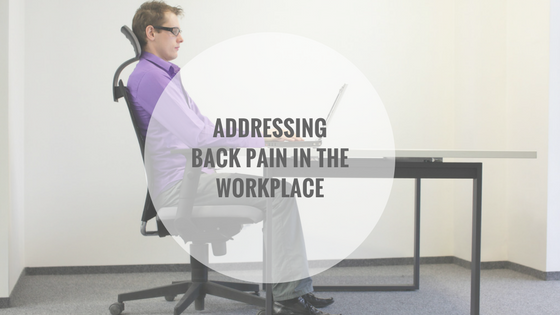Guest Blogger: Samantha Langan, MSc. OT, Occupational Therapist
In 2010, back pain was found to be the single leading cause of disability world-wide according to the Global Burden of Disease. It has been estimated that 186 million work days are lost each year to back pain alone which greatly impacts workplace productivity and costs. The Mayo Clinic has found that a number of factors can contribute to back pain and back injuries at work. The four most common factors include:
1. Force: Job demands that require lifting or moving heavy objects exerts force on our back which can lead to injury.
2. Repetition: Repetitive movements leads to muscle fatigue and in turn can lead to injury, particularly if these movements involve stretching our back near the limits of our range of motion or using awkward body positions.
3. Posture: Posture is a critical component in preventing fatigue and injury. Slouching or sitting in awkward positions alters the natural curves in our back, increasing fatigue and can lead to pain and injury.
4. Stress: While we often think of the negative impacts stress can have on our mental well-being, it also impacts our physical well-being. High levels of pressure at work or increased stress leads to muscle tension and tightness, which can contribute to or worsen back pain.
If back pain is something you or someone in your workplace experience, there are some strategies you can use to help minimize existing problems and even prevent issues before they arise:
· Ensure that your feet are flat on the floor, as this helps stabilize our pelvis and lower back
· If you have an adjustable chair, alter the settings so that your lower back has increased support
· Get a colleague to take a photo of you sitting at your desk or workstation and examine your posture. Can this be adjusted?
· Take regular breaks to stretch, stand up and walk around the office to complete other tasks
For more information, take a look at our FREE downloadable resource on office ergonomics and stay tuned for more Workplace Wednesday blog postings highlighting stretches and exercises to help address common work-related concerns such as back pain.
Resources
http://www.inthefaceofpain.com/content/uploads/2011/09/factsheet_Workplace.pdf







